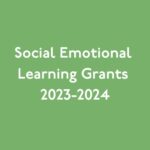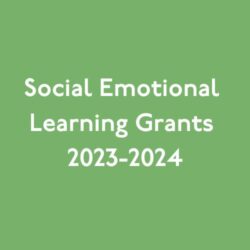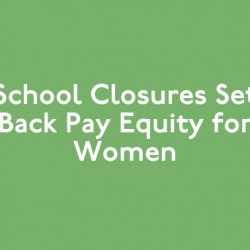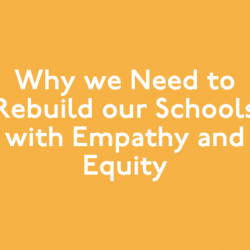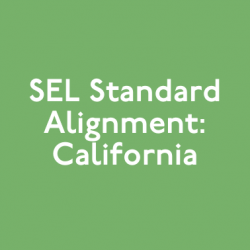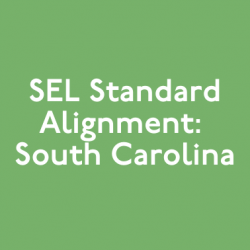We’ve spoken about what the Every Student Succeeds Act (ESSA) does include, what it doesn’t include, and the law’s relationship with social emotional learning. A significant portion of ESSA is the funding that is appropriated alongside the policy. However, 70% of educators aren’t aware of ESSA’s built-in funding assistance and flexibility to offset budget uncertainty, though many states and school districts rely on this money and the opportunity it can provide. Let’s take a look at the funding opportunities within ESSA.
Title I: Improving the Academic Achievement of the Disadvantaged
Part A: Improving Basic Programs Operated By Local Educational Agencies
Title I funding is the largest portion of backing within the Every Student Succeeds Act and is intended to create equity for all students by closing educational achievement gaps. This funding is distributed through states to school districts or local education agencies (LEAs), as well as to schools which enroll large percentages of students from low-income families.
In schools enrolling at least 40% of low-income students, Title I funds can be used to implement school-wide programs that aim to increase student achievement, especially among the student groups which consistently under perform. If a school doesn’t reach the 40% threshold, they can use Title I funds for targeted assistance programming. This programming focuses on under performing students rather than being implemented school-wide. It’s important to note that targeted assistance programming isn’t necessarily focused on economically disadvantaged students. Really, it is concentrated on groups of students struggling academically; oftentimes, this includes: English-language learners, children with disabilities, students from major racial and ethnic groups, as well as economically disadvantaged students.
In order to receive Title I funding, the Department of Education has to approve the states’ accountability plans, which describe how the state intends to improve learning conditions. Each state can reserve 7% of its Title I funding for LEAs implementing comprehensive or targeted support and improvement activities. This gives states some decision-making power –the rest of the Title I funding is allocated based upon the US Census.
Part D: Prevention And Intervention Programs For Children And Youth Who Are Neglected, Delinquent, Or At-Risk
Title I, Part D provides funds for state education agencies to use for supplemental educational continuity services for at-risk youth. These services are meant to provide both students in juvenile and adult correctional institutions the ability to transition to school or employment once they are released.
These funds are distributed to state agencies who then make sub-grants to the state agencies who support at-risk youth. State agencies also award funds to local education agencies who have a high percentage of students in correctional facilities.
Title II: Preparing, Training, And Recruiting High-Quality Teachers, Principals, Or Other School Leaders
Part A: Supporting Effective Instruction
Title II, Part A provides funding for professional services. Professional services, as defined in the law, are based around four categories.
-
Services which can help teachers identify children with, or at risk of, mental illness and students affected by trauma.
-
Using adequate referral mechanisms to link affected students to appropriate intervention and treatment services, both in the school and greater community.
-
Partnering public or private mental health organizations with school-based mental health programs.
-
Services that address issues related to student learning, like chronic absenteeism, safety, student interaction, or drug and alcohol abuse.
Title IV: 21st Century Schools
Part A: Student Support And Academic Enrichment Grants
Title IV, Part A funding is divided into 3 sections, all aimed at supporting the whole child. The first area is supporting students’ well-rounded education, servicing programs in the arts, STEM, college and career counseling, and International Baccalaureate/Advanced Placement. The second area is supporting students wellbeing, servicing programs addressing mental health, training on trauma-informed practices, drug and violence prevention, and health and physical education. The last area supports the effective use of technology in the school and classroom.
This funding is allocated to states who then disperse the funds to school districts.
Part B: 21st Century Community Learning Centers
Title IV, Part B allows for communities to expand or establish activities in community learning centers. Community learning centers offer a wide variety of student services, such as: nutrition and health education, counseling programs, service learning, drug and violence prevention programs, and youth development activities.
Funding is allocated to states and can then be dispersed through competitive grants to school districts, community organizations, or any other private or public organization.
Part F: National Activities
There are two competitive grant programs under Title IV, Part F: Promise Neighborhoods and Full Service Community Schools (FSCS).
The goal of Promise Neighborhoods is to “vastly improve the academic and developmental outcomes of children living in the most distressed communities through a community-based continuum of high-quality services.” Promise Neighborhoods provides grants to higher education institutions, Indian tribe or tribal organizations, and some nonprofits.
The FSCS program aims to reinforce the planning, implementation, and operation of full-service community schools that improve the overall effectiveness of services for students and families, particularly for children attending high poverty schools. FSCS funds go to a coalition of school districts or the Bureau of Indian Education and, either a community-based organization, or other public or private nonprofit entities.
Both of these grants can last for up to five years with a 2 year renewal opportunity.
Title VI: Indian, Native Hawaiian, And Alaska Native Education
Title VI provides funding to school programming for Indian, Native Hawaiian and Alaska Native students that are “designed to meet the unique cultural, language, and educational needs of such students and ensure that all students meet the challenging State academic standards.” This funding can also go to programs educating students on violence, suicide and substance abuse prevention. The funding goes to school districts, Alaskan organizations, Indian tribes or tribal organizations, and Indian community-based organizations as grants.
Title IX: Education For The Homeless And Other Laws
Part A: Homeless Children And Youths
Title IX, Part A reauthorizes the Education for Homeless Children and Youths Program of the McKinney-Vento Homeless Assistance Act and requires state educational agencies to establish an Office of the Coordinator for Education of Homeless Children and Youth along with a liaison within every school district. States must submit a plan for supporting homeless children and youths in the state. These supports might include ensuring transportation between foster homes and schools or educating school personnel on ways to better support homeless children. States receive this funding directly and a portion of it then goes to local education agencies.
Sign up for Move This World’s newsletter to stay up to date on social emotional learning.
Enter your email below!




